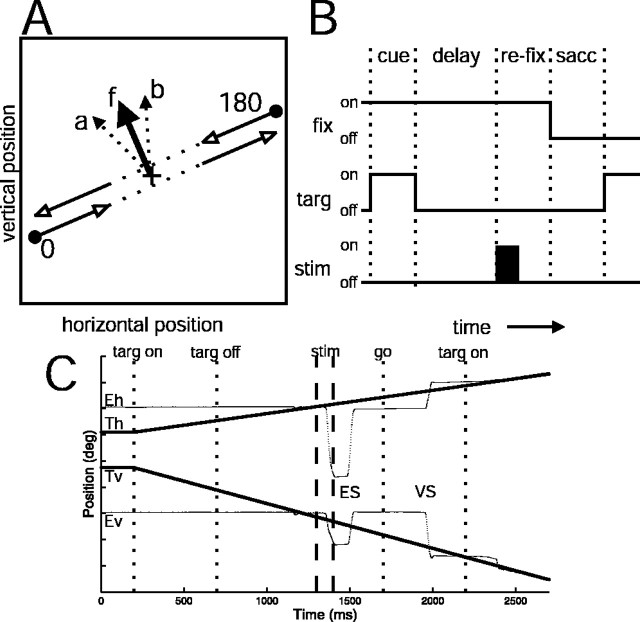Figure 1.
Motion extrapolation task and stimulation protocol. A, Depiction of video display showing target trajectories (open arrows). The target paths for the two directions of motion are shown with a slight separation for clarity. In the actual experiment, the paths overlapped. The solid lines indicate portions of the trajectory in which the target was visible. The dotted lines indicate where the target was invisible. The arrow labeled f represents a hypothetical fixed vector saccade evoked by stimulating FEF when the monkey was fixating a stationary target. The arrows labeled a and b indicate hypothetical saccades that might be evoked by microstimulation when the monkey was performing the motion extrapolation task. The large + indicates the fixation mark. B, Trial time structure. Trials were divided into cue, delay, stim/re-fix, and saccade epochs. The traces indicate the state (on/off) of the fixation spot (fix), moving target (targ), microstimulation (stim). C, Eye and target position traces for a single stimulation trial. Eh and Th are horizontal eye and target position, and Ev and Tv are vertical eye and target position. The traces are offset vertically for clarity. The y-axis tick marks represent 5° increments. ES and VS are the electrically evoked and voluntary saccades, respectively. The vertical dotted and dashed lines indicate target visibility, stimulation period, and the “go” signal for the voluntary saccade.

